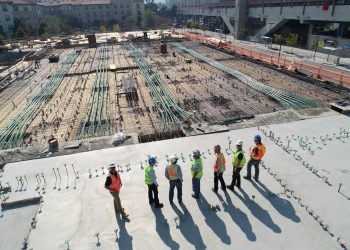Colorado’s dramatic landscape is famous for its beauty — but for roofers, it’s equally famous for its challenges. From high winds to intense sunlight, heavy snow to destructive hail, few states test the limits of roofing systems like Colorado does. Yet those same challenges have turned the state into one of the country’s best proving grounds for innovation, durability, and resilience in construction. What contractors and homeowners have learned here is shaping not just Colorado Springs roofing, but how the rest of the nation builds stronger, longer-lasting homes.
A Climate That Pushes the Limits
At elevations exceeding 6,000 feet, Colorado homes endure a combination of factors that make roofing a complex science. The high altitude means stronger UV radiation, which causes shingles to fade and crack faster than in lower regions. In winter, fluctuating temperatures create freeze-thaw cycles that can lead to ice dams and leaks. And every spring and summer, hail season returns with the potential to devastate thousands of roofs in a single storm.
For contractors, these conditions demand materials and installation techniques that go far beyond basic code compliance. Roofs must be impact-resistant roofing material, properly ventilated, and expertly sealed. What’s being developed and tested in Colorado has quickly become the benchmark for climate-adaptive construction elsewhere in the country.
The Evolution of Resilient Roofing Materials
In response to this environment, Colorado builders have embraced a new generation of high-performance materials. Class 4 impact-resistant shingles, metal roofing, and polymer composites have become the new norm. These systems are engineered to endure hailstones, shed snow efficiently, and reflect intense sunlight — all while extending a roof’s lifespan.
This innovation isn’t limited to residential builds. Commercial properties throughout Colorado have transitioned to more durable flat roofing systems such as TPO, EPDM, and PVC membranes that combine energy efficiency with long-term reliability.
Manufacturers nationwide now test many of their newest products in Colorado’s Front Range region before releasing them to the broader market. If a material can survive a Colorado hailstorm or a winter blizzard, it can likely survive anywhere.
Insurance, Inspection, and the Rise of Preparedness
The state’s weather extremes have also influenced how the roofing and insurance industries work together. Colorado homeowners are no strangers to insurance claims, and roofing contractors have become experts at guiding clients through inspections, claims, and damage verification.
In markets like Colorado Springs, roofing companies have refined post-storm processes that balance efficiency with integrity — verifying actual damage before claims are filed and ensuring that nothing is missed during insurance assessments. This model of transparency and preparedness has begun to spread nationwide as more regions experience extreme weather patterns.
The Broader Lesson: Resilient Construction Is Smart Construction
Colorado’s roofing challenges have proven one thing beyond doubt — resilience isn’t optional; it’s essential. Every time a major storm hits, contractors and homeowners are reminded that short-term fixes don’t last. Long-term strength, efficiency, and sustainability pay off in reduced maintenance costs and greater home value.
The same principles that define durable roofing — smart material choices, proactive inspection, and proper installation — are now influencing broader construction standards across the U.S. Builders are applying Colorado’s lessons to siding, windows, insulation, and even foundation systems designed for climate adaptability.
A Model for the Nation
In many ways, Colorado has become America’s classroom for resilient construction. What began as a regional necessity has evolved into a national example of innovation and preparedness.
From energy-efficient materials to impact-resistant roofs and smarter building codes, Colorado’s extreme climate has forged an industry culture that prioritizes endurance over aesthetics alone. The rest of the country is taking note — because when it comes to building for the future, no one knows how to rise above the weather quite like Colorado.












